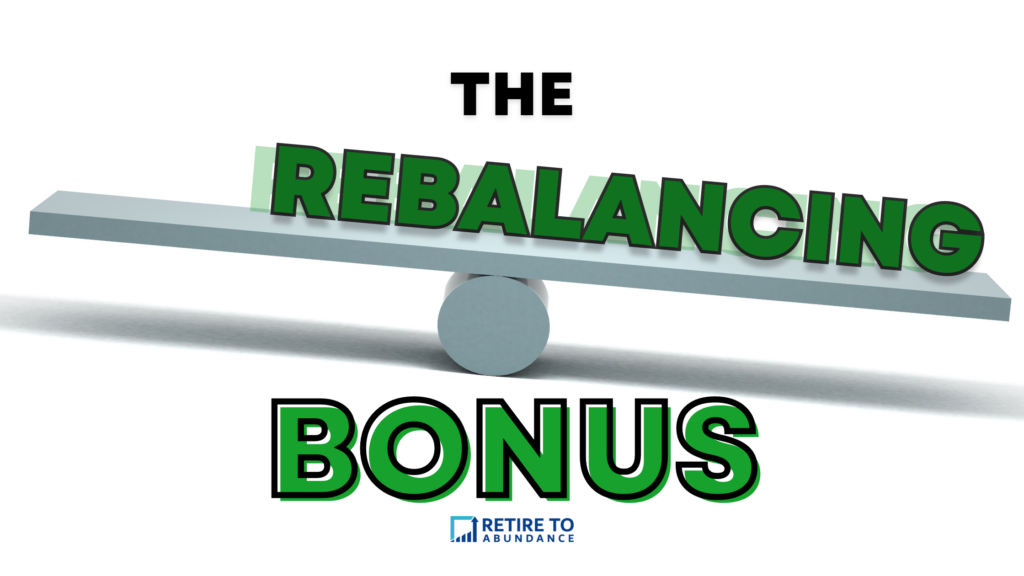When setting out to create your investment portfolio, maintaining a well-balanced portfolio is critical in helping to maintain your long-term financial goals. I gave an introduction to the concept of asset allocation in my blog Asset Location vs. Asset Allocation, but stated simply, asset allocation is the process of dividing your investment portfolio among different asset classes in order to align it with your risk tolerance, time horizon, and investment goals. Through this process, a target allocation is created as a plan to help you best achieve your goals. Rebalancing your portfolio is the process utilized to adjust your portfolio over time as it drifts away from your target allocation.
Let’s look at a simplified illustration for a $100,000 portfolio, target allocations are listed below:
25% US Large Cap
25% US Small Cap
25% International Equities
25% US Bonds
This would mean you had $25,000 invested in each of the above asset classes. In our hypothetical situation, let’s say that US Large Cap does really well, and simultaneously US Small Cap performs poorly and the other two categories stay flat. At this point you have $30,000 in US Large Cap, $20,000 in US Small Cap and $25k in the other categories. To rebalance this account, you would sell $5,000 of your US Large Cap Allocation and purchase $5,000 of your US Small Cap Allocation to get back in line with your target allocations.
While this simple example does a nice job illustrating the basics, unfortunately the math can get a bit more complicated as account values aren’t static, often time money is being added into the account and generally there are many more asset classes to contend with. At a minimum one would need to build a spreadsheet to help keep track. Here at QED Wealth Solutions, we utilize a rebalancing software to help us track the necessary information.
Time-Based vs Drift-Based Rebalancing
When considering rebalancing, one obvious question comes to mind: When should I rebalance my portfolio? The two schools of thought that exist in the financial space are time-based and drift-based rebalancing. Time-based rebalancing enacts the rebalancing transactions at a predetermined time interval, such as quarterly or annually. Alternatively, drift-based rebalancing is triggered when the investment allocation has drifted away from the target allocation by a predetermined percentage, typically from 10% to 25%. As a caveat, this is where percentages can get kind of confusing as we are discussing a percent of a percent (a percentage change of a target allocation percent). Looking at our example above, if our drift-based trigger is 10%, then the rebalance would be triggered when the US Large Cap reached $27,500. Since the target allocation amount was $25,000, an increase/decrease of $2,500 is a 10% deviation (10% of the $25k allotted to that specific category) away from the target allocation.
Challenges
Each re-balancing method comes with its own set of pros and cons. Within time-based rebalancing, the frequency can present challenges. Some studies have shown an increased return with more frequent rebalancing. However, doing it more frequently leads to extra work as well as extra, and possibly extraneous, transaction costs. Alternatively, only rebalancing once per year lowers your transaction costs but runs the risk of waiting too long to give the rebalancing bonus that you’re after. While drift-based rebalancing can seem like a goldilocks solution as transactions are only occurring when necessary, its downfall comes in trying to manage the process. Most people are busy living their lives and not watching their account values each day, much less keeping track of the percent of change for their target allocation. For this reason, it is my opinion that you only want to utilize drift-based rebalancing if you have a trading/rebalancing software to help manage the process. This is our process here at QED Wealth Solutions. With a few exceptions our clients’ portfolios are rebalanced when their target allocations have moved more than 15% from their target allocations. While utilizing rebalancing software is probably not practical for most individual investors, we find it a critical component in effectively managing our client’s portfolios.
The Few Exceptions
Above we mentioned that we have a few exceptions where we do not utilize the 15% drift-based rebalancing…typically these exceptions are for tax reasons. While you can pretty much be agnostic towards taxes when rebalancing within a retirement account (both Roth and tax-deferred account types), you must be mindful of taxes when working with a non-qualified account. While there can be some wonderful opportunities for tax-loss harvesting in these accounts, the tax consequences of a trade must be considered before its execution.
The Genius of Rebalancing
The genius of rebalancing stated simply is its ability to be a forcing mechanism to buy low and sell high. Remembering our example from earlier where US Large Cap performed well and US Small Cap performed poorly, Whether the mechanism is triggered via a time-based trigger or a drift-based trigger, the better performing asset is sold at a relative high while the poorly performing asset is purchased at a relative low. Done consistently, utilizing this strategy has been proven to lead to higher risk adjusted returns (though admittedly being this dispassionate poses some challenges for individual investors as this requires you to sell your top performers and purchase more of your poor performers).
If you are worried about your retirement and see rebalancing as a strategy that not only increases returns but also reduces volatility, you can request a complimentary Retirement Assessment from QED Wealth Solutions.
This post is for educational and entertainment purposes only. Nothing should be construed as investment, tax, or legal advice.

